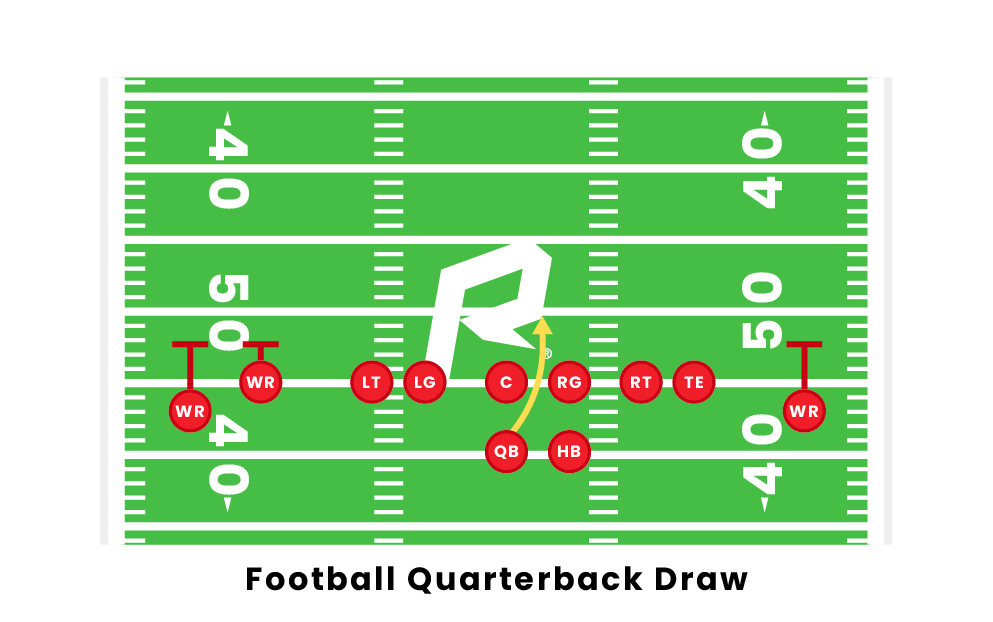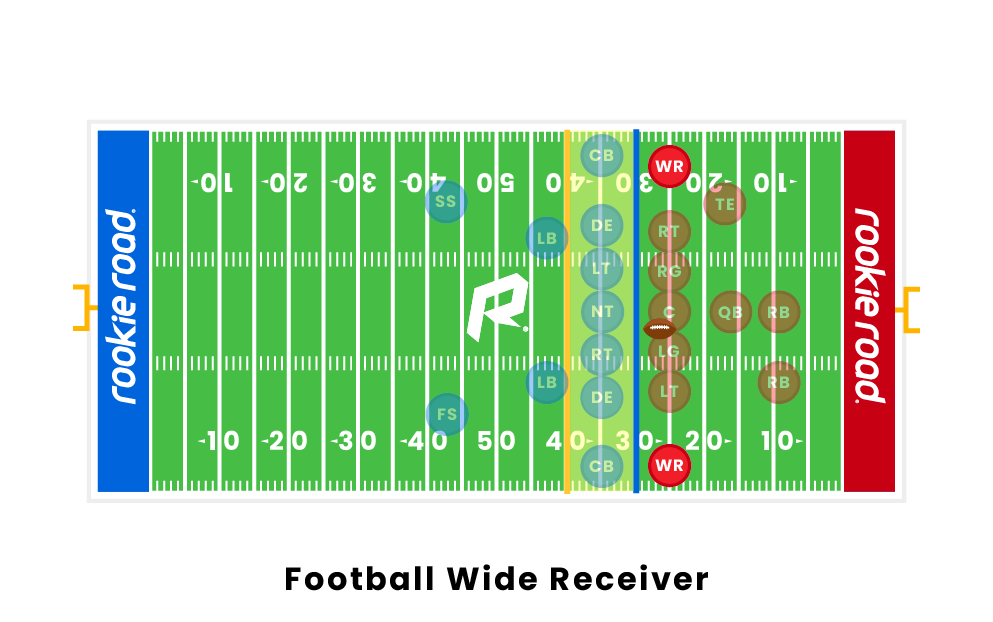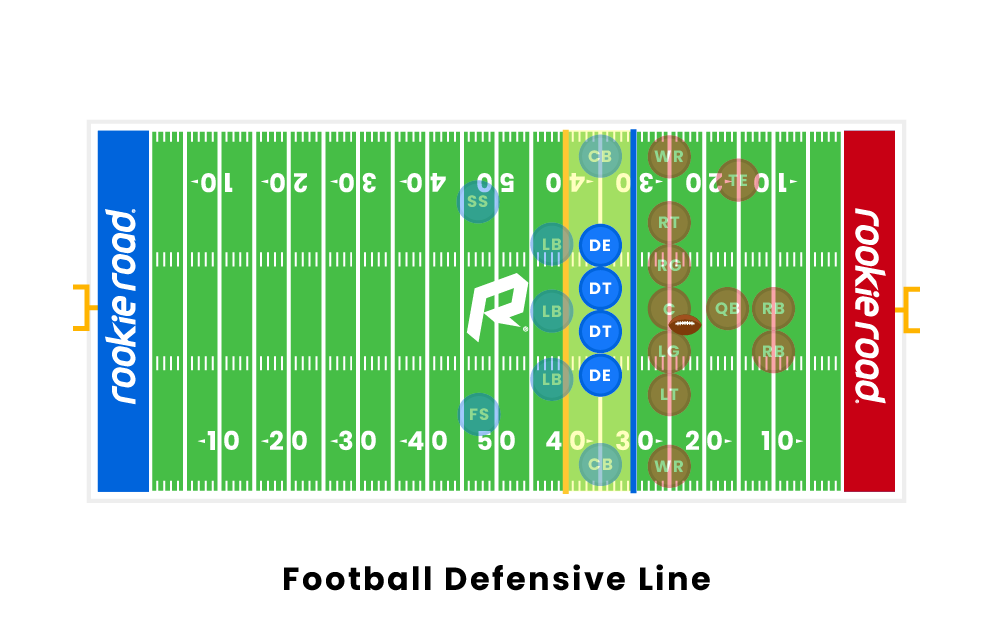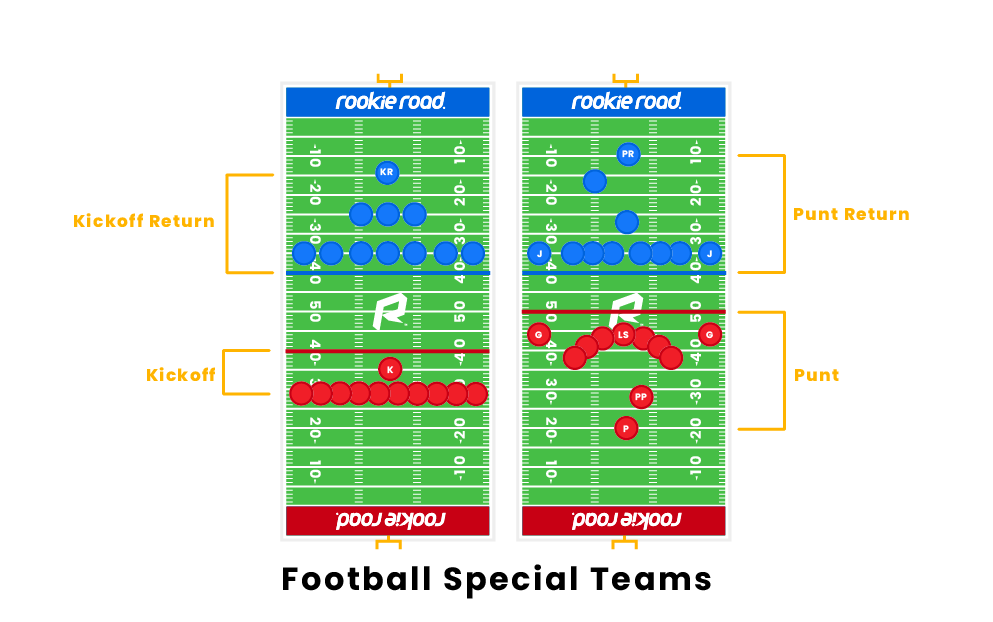Blog
A Comprehensive Guide to NFL Positions and Their Roles on the Field
When it comes to American football, understanding the roles and responsibilities of each position is crucial to fully enjoy the game and appreciate the strategy behind it. In this blog post, we’ll break down the key positions on the field and explain their primary functions in both offense, defense, and special teams.
Offense
The offensive team’s objective is to move the ball down the field and score points by crossing the opposing team’s goal line or kicking the ball through the goalposts. The main positions on the offensive side are:
Quarterback (QB)

The quarterback is the field general and leader of the offense. He calls the plays, takes the snap from the center, and either hands the ball off to a running back, throws it to a receiver, or runs with it himself. A good quarterback needs to read defenses, make quick decisions, and have a strong and accurate throwing arm.
Running Back (RB)
Running backs are responsible for carrying the ball on running plays and often serve as pass catchers out of the backfield. There are two main types of running backs: halfbacks and fullbacks. Halfbacks are typically faster and more agile, while fullbacks are bigger and stronger, often used for blocking and short-yardage situations.
Wide Receiver (WR)

Wide receivers are the primary pass-catching targets for the quarterback. Their primary responsibility is to create separation from defensive backs and catch the ball. Wide receivers must possess speed, quickness, good hands, and precise route-running skills.
Tight End (TE)
Tight ends are hybrid players who can both block and catch passes. They usually line up next to the offensive line and can serve as an extra blocker on running plays or a receiver on passing plays. Tight ends require a combination of size, strength, and athleticism to excel in their role.
Offensive Line (OL)
The offensive line consists of five players: the center, two guards, and two tackles. Their main job is to protect the quarterback and create running lanes for the running backs. The center is responsible for snapping the ball to the quarterback and making line calls, while the guards and tackles focus on blocking defenders.
Defense
The defensive team’s goal is to stop the offense from scoring by tackling ball carriers, intercepting passes, and forcing fumbles. The key defensive positions are:
Defensive Line (DL)

The defensive line is composed of defensive tackles and defensive ends. Their primary role is to stop the run and pressure the quarterback. Defensive tackles are typically larger and stronger, focusing on clogging up running lanes, while defensive ends are faster and more agile, tasked with rushing the passer and containing outside runs.
Linebacker (LB)
Linebackers are versatile defenders who can play the run, cover pass-catching targets, and occasionally rush the passer. There are two main types of linebackers: inside linebackers and outside linebackers. Inside linebackers are generally bigger and stronger, responsible for stopping the run and covering short passing routes. Outside linebackers are more athletic, often tasked with covering tight ends or running backs in pass coverage and rushing the passer.
Defensive Back (DB)
Defensive backs consist of cornerbacks and safeties. Their main responsibility is to defend against the pass by covering receivers and intercepting the ball. Cornerbacks are usually smaller and faster, responsible for covering wide receivers in man-to-man or zone coverage. Safeties are the last line of defense and have a broader range of responsibilities, including helping on deep pass coverage, run support, and occasionally blitzing the quarterback.
Special Teams
Special teams are responsible for kicking, punting, and returning kicks. The key positions in special teams are:
Kicker (K)

The kicker’s job is to score points by kicking field goals or extra points after touchdowns. Kickers must have a strong and accurate leg, as well as the mental toughness to handle high-pressure situations.
Punter (P)
The punter’s role is to kick the ball away to the opposing team on fourth down when the offense fails to get a first down. Punters must have a strong leg and the ability to accurately place the ball to pin the opposing team deep in their own territory.
Return Specialist (RS)
Return specialists are responsible for fielding kickoffs and punts, then attempting to return them for as many yards as possible. Return specialists need to have exceptional speed, agility, and vision to find open lanes and avoid tacklers.
By understanding the roles and responsibilities of each position, you can better appreciate the strategy and complexity of the game. Next time you watch an NFL game, keep an eye on the various positions and how they contribute to the success or failure of each play. As you become more familiar with the intricacies of the game, you’ll find that the excitement and drama of American football only continue to grow.

